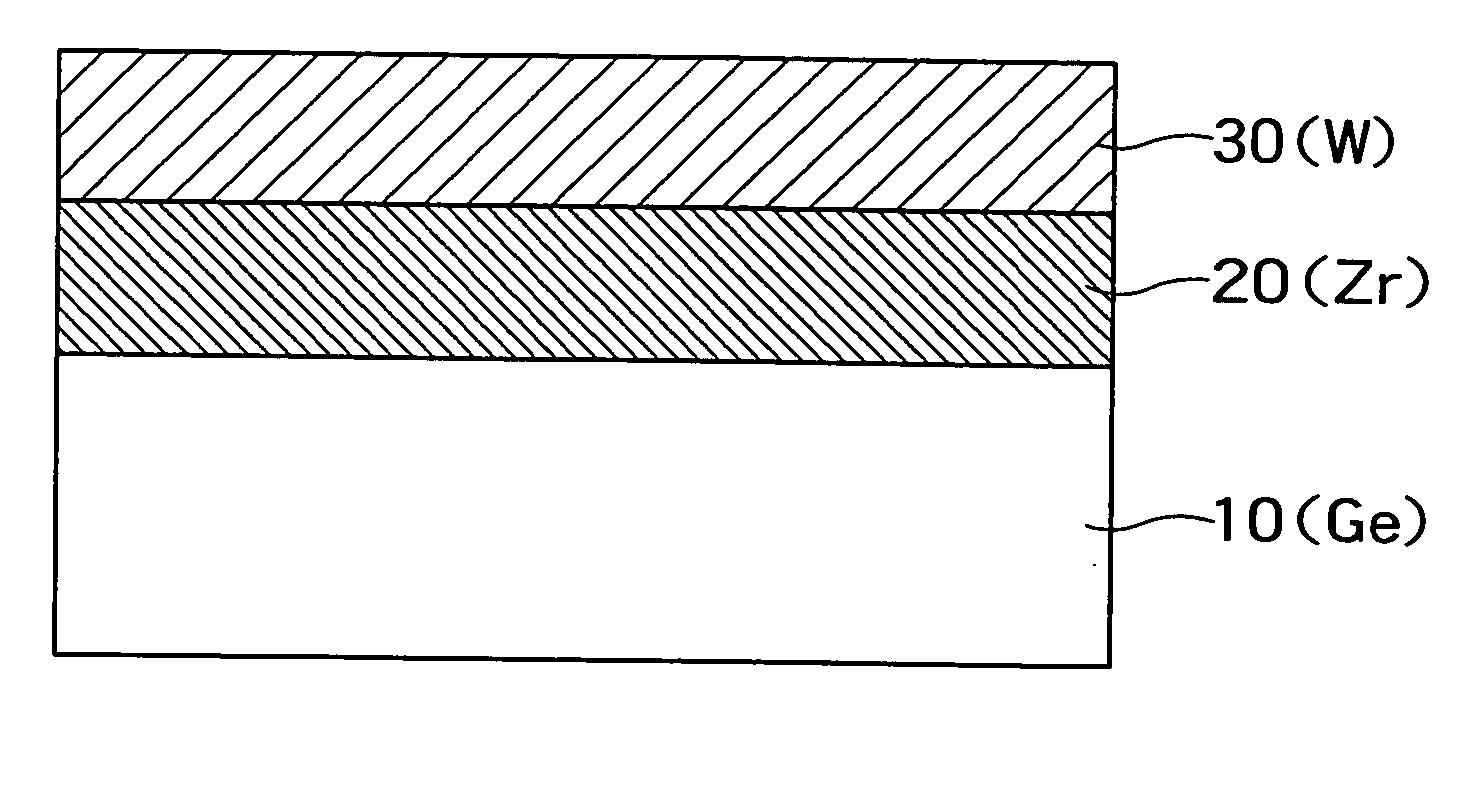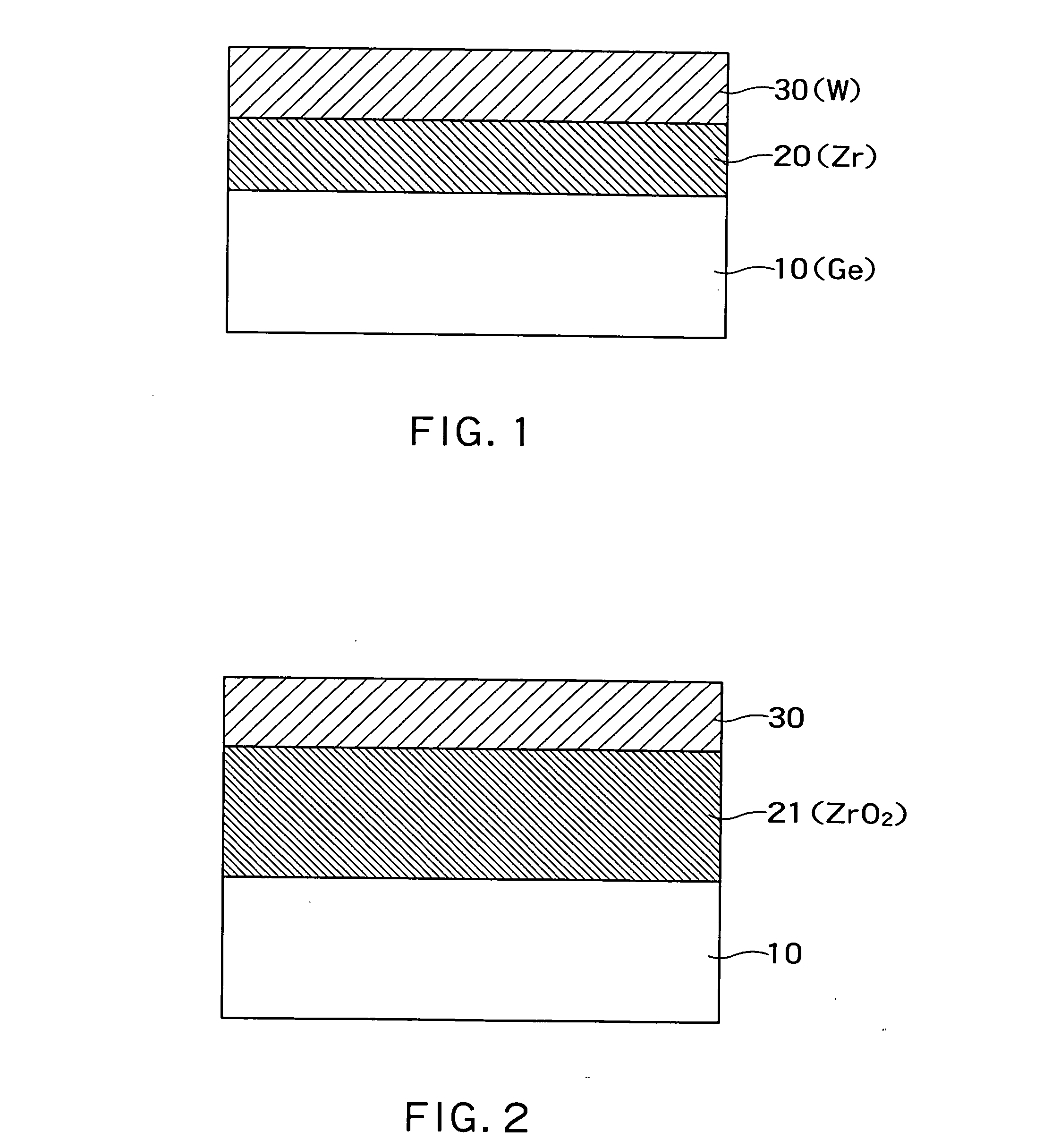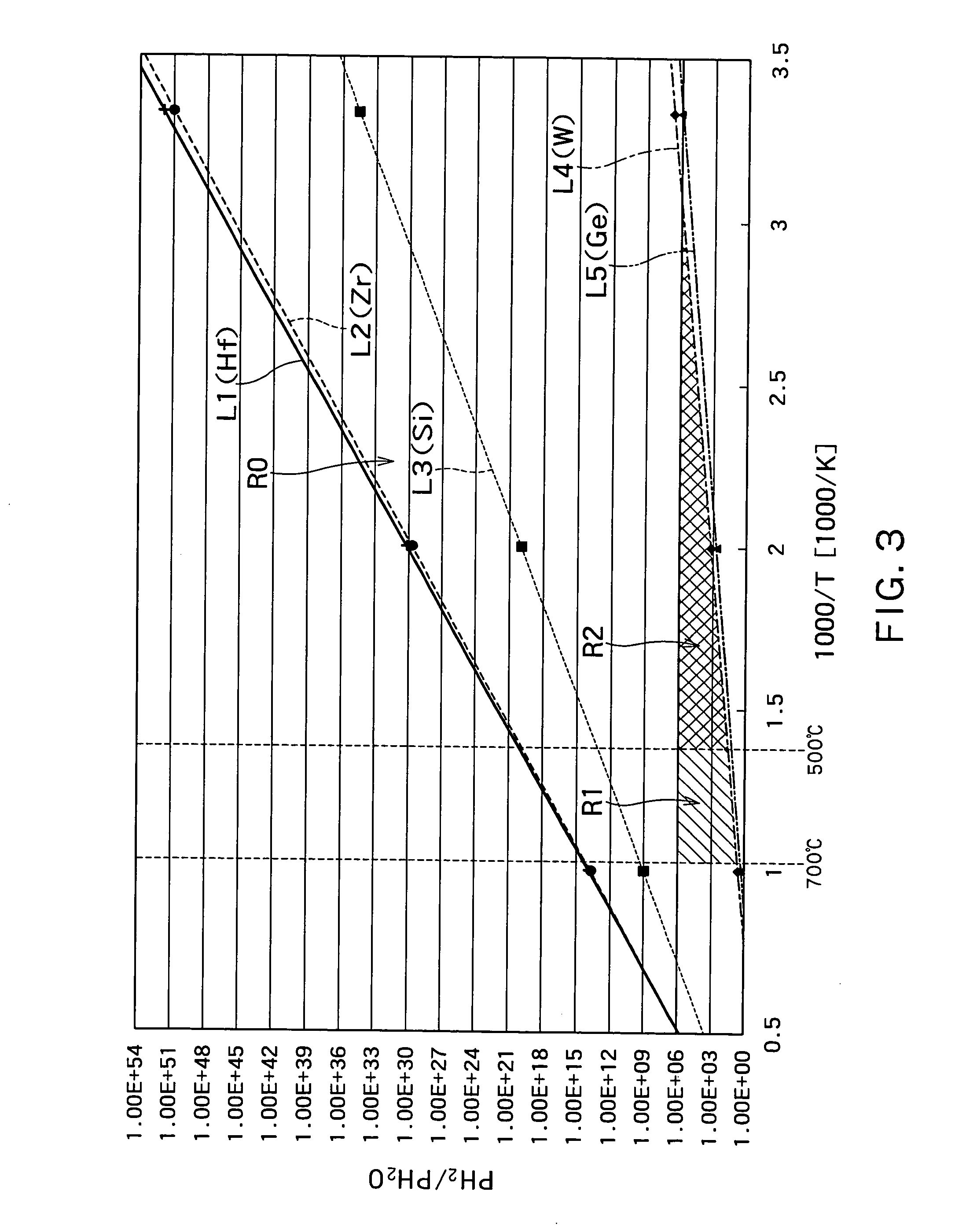Semiconductor device and manufacturing method thereof
a technology of semiconductor devices and manufacturing methods, applied in the direction of semiconductor devices, basic electric elements, electrical appliances, etc., can solve the problems of low thermal stability and low dielectric constant, easy oxidization of metals undesirably reacting with high-k films, etc., and achieve the effect of reducing leak current and eo
- Summary
- Abstract
- Description
- Claims
- Application Information
AI Technical Summary
Benefits of technology
Problems solved by technology
Method used
Image
Examples
first embodiment
[0036]FIGS. 1 and 2 are cross-sectional views showing a manufacturing method of a semiconductor device according to the first embodiment of the invention. This embodiment is directed to a manufacturing method of a semiconductor device having a MIS (Metal Insulator Semiconductor) structure.
[0037] A natural oxide film is removed from the surface of a single-crystal germanium (Ge) substrate 10. As shown in FIG. 1, next deposited on the germanium substrate 10 is a zirconium film 20 as a first material for a gate insulator. Subsequently, a tungsten (W) film 30 is deposited as a second material for a gate electrode on zirconium film 20. Thickness of the tungsten film 30 is preferably equal to or less than 20 nm to permit hydrogen and oxygen to diffuse into the zirconium film 20 through the tungsten film 30. This will be explained later in greater detail with reference to FIGS. 16 and 17. For example, the zirconium film 20 and the tungsten film 30 may be 2 nm thick approximately.
[0038] A...
second embodiment
[0060]FIGS. 4 and 5 are cross-sectional views showing a method of manufacturing a semiconductor device according to the second embodiment of the invention. As shown in FIG. 4, the zirconium oxide (ZrO2) film 21 as the first material for the gate insulator is deposited on the germanium substrate 10. After that, the tungsten film 30 as the second material for the gate insulator is deposited on the zirconium oxide (ZrO2) film 21.
[0061] In the second embodiment, since the zirconium oxide (ZrO2) film 21 is deposited as the first material for the gate insulator, the first material for the gate insulator need not be oxidized selectively. However, once an oxide is deposited on the germanium substrate, the surface of the germanium substrate 10 is undesirably oxidized. As a result, as shown in FIG. 5, a germanium oxide (GeO2) film 11 is undesirably formed between the germanium substrate 10 and the zirconium oxide film 21. Since the germanium oxide film 11 has a dielectric constant lower than...
third embodiment
[0067]FIGS. 6 and 7 are cross-sectional views showing a manufacturing method of a semiconductor device according to the third embodiment of the invention. As shown in FIG. 6, a hafnium oxide (HfO2) film 51 is first deposited as the first material for the gate insulator on the germanium substrate 10. Subsequently, the tungsten (W) film 30 is deposited as the second material for the gate electrode on the hafnium oxide film 51. The hafnium oxide film 51 and the tungsten film 30 may be approximately 2 nm thick respectively.
[0068] Once the hafnium oxide film 51 is deposited on the germanium substrate, the germanium oxide (GeO2) film 11 is undesirably formed along the interface between the germanium substrate 10 and the hafnium oxide film 51. For example, if the thickness of the hafnium oxide film 51 is 2 nm, the germanium oxide film 11 becomes 3 nm thick approximately. The germanium oxide film 11 has a lower dielectric constant than the hafnium oxide film 51. Therefore, EOT of the gate ...
PUM
| Property | Measurement | Unit |
|---|---|---|
| temperature | aaaaa | aaaaa |
| temperature | aaaaa | aaaaa |
| thickness | aaaaa | aaaaa |
Abstract
Description
Claims
Application Information
 Login to View More
Login to View More - R&D
- Intellectual Property
- Life Sciences
- Materials
- Tech Scout
- Unparalleled Data Quality
- Higher Quality Content
- 60% Fewer Hallucinations
Browse by: Latest US Patents, China's latest patents, Technical Efficacy Thesaurus, Application Domain, Technology Topic, Popular Technical Reports.
© 2025 PatSnap. All rights reserved.Legal|Privacy policy|Modern Slavery Act Transparency Statement|Sitemap|About US| Contact US: help@patsnap.com



